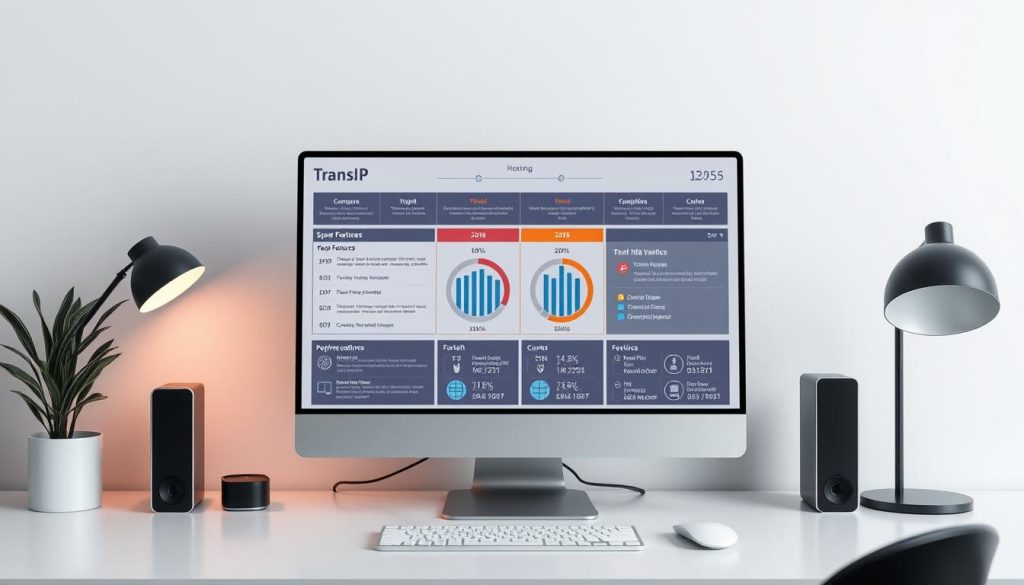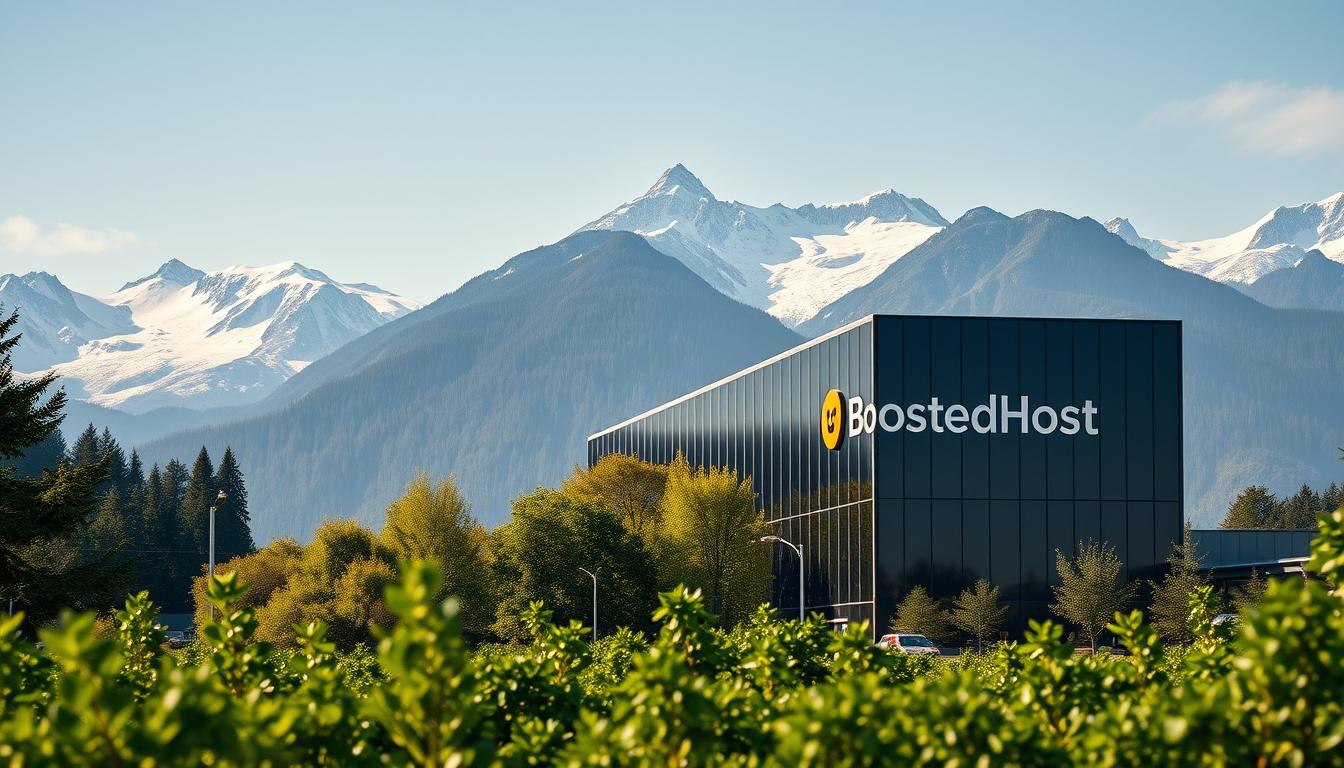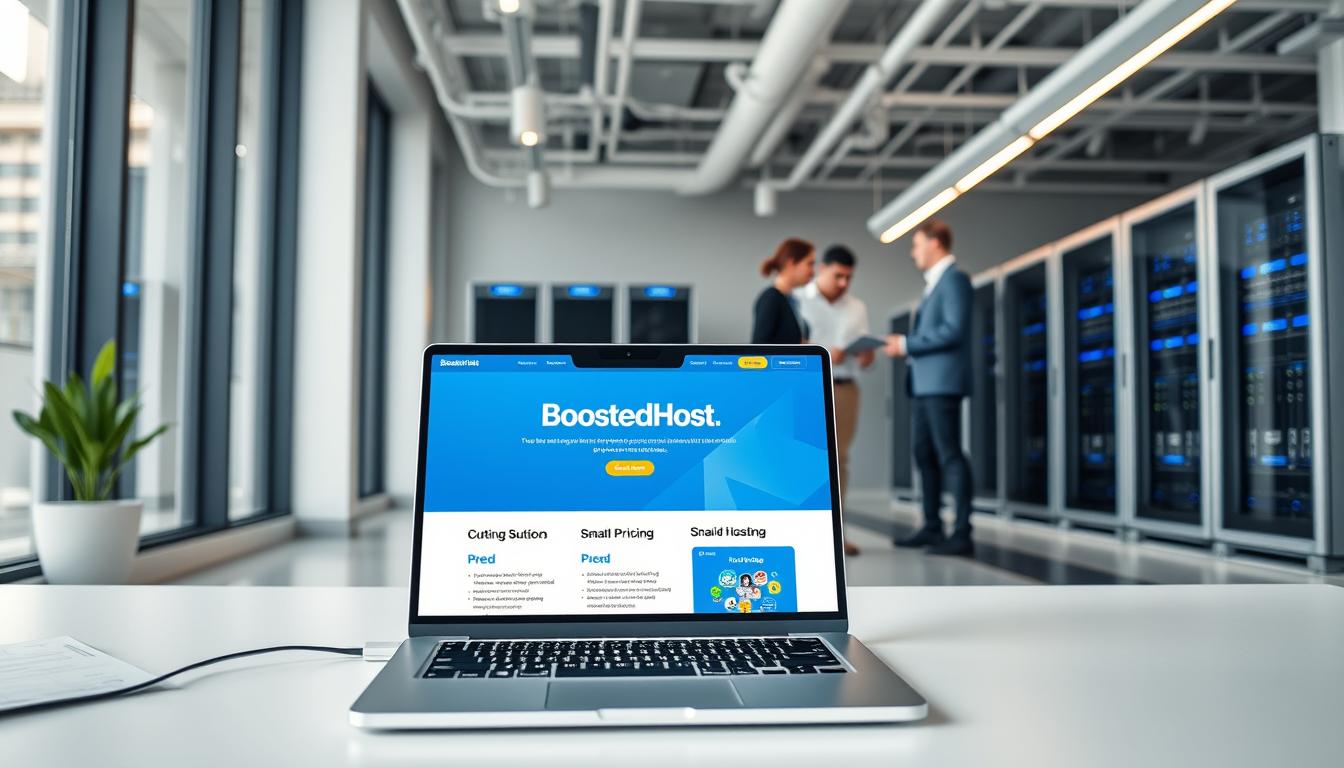We know the late-night worry of a slow site costing sales and confidence. We built this comparison because your time and revenue matter. We speak plainly and act on data.
We run ultra-fast LiteSpeed stacks, free SSL, daily backups, malware protection, and a global CDN. Our hosting plans aim for 99.99% uptime and sub-200ms global TTFB. That matters for real users and for search.
Across this head-to-head, we measure latency, throughput, real-user performance, uptime, and total cost of ownership. We also check company address location, public company descriptions fine points, and social signals like twitter facebook accounts to round out trust factors.
We will be direct about where each provider leads. We acknowledge TransIP’s long track record and verified presence on industry lists. And we explain why speed, transparency, and support response change outcomes for your website and business.
Key Takeaways
- We compare speed, uptime, and support to help you choose a hosting provider.
- Performance targets: sub-200ms TTFB and 99.99% uptime are practical baselines.
- Transparent pricing and quick onboarding reduce hidden costs and delays.
- Data center choices and regional routing affect latency for target audiences.
- Company address location and company descriptions fine details matter for procurement.
- Public signals like twitter facebook accounts added help gauge trust, not replace benchmarks.
At-a-glance overview for 2025: scope, methodology, and what matters most
We test real setups so you see practical results. Our scope covers web hosting, managed WordPress hosting, and Orbit AI site builds. We compare shared, managed, and VPS-style plans with the same tooling and criteria.
Key criteria: speed (TTFB and full-load), uptime, pricing transparency, feature completeness (free SSL, daily backups, CDN, malware protection), data center reach across Switzerland, USA, Europe, and Asia, developer stack support (PHP, Node.js, Python), and WooCommerce readiness.
We monitor uptime with independent tools and measure speed from multiple global vantage points. We log support metrics—time to first human and time to resolution—and review onboarding, migration help, and knowledgebase faq urls.
“We weight performance, reliability, and transparency so you can match scores to your priorities.”
WHTop lists one provider as trusted since 2016; that helps contextualize market standing. We also check company descriptions fine and twitter facebook accounts added as secondary credibility signals.

| Scope | What We Measure | Why It Matters |
|---|---|---|
| Shared, Managed WP, VPS | TTFB, full load, uptime, support SLAs | Real user speed, availability, and business continuity |
| Features & Onboarding | SSL, backups, CDN, migration, docs | Reduces hidden costs and time-to-live |
| Geography & Stack | Data centers, PHP/Node/Python, WooCommerce | Latency control and development flexibility |
For full hosting comparisons and plan details visit our comparison page: web hosting comparison.
BoostedHost vs TransIP: real-world performance and uptime
We test real traffic patterns to see how TTFB and regional peering change load times for global sites.
Speed benchmarks matter: our LiteSpeed stack plus layered caching targets sub-200ms global TTFB. That protects search rankings and reduces bounce when pages must start rendering fast.
We use full-SSD arrays across servers to keep I/O predictable. SSD webserversour web design handles database spikes and media-heavy pages without slowdowns.

“Sub-200ms TTFB and 99.99% uptime are not marketing lines — they are operational goals that cut friction for customers.”
Uptime and network reach
We aim for 99.99% uptime to provide maximum accessibility website owners need. Redundant TLS, failover, and health checks keep pages live during partial outages.
Data centers in Switzerland, the USA, Europe, and Asia shorten routes through one largest internet exchanges and largest internet hubs. We maintain networkdirectly connected ams-ix peering where available to tune speed networkdirectly connected paths.
| Metric | Our Target | Why it matters |
|---|---|---|
| TTFB | Sub-200ms | Preserves SEO and lowers bounce |
| Uptime | 99.99% | Business continuity and revenue protection |
| Storage | Full SSD | Consistent I/O for sites and databases |
| Caching | LiteSpeed + CDN | Fast render starts and global consistency |
- Layered caching and CDN reduce seconds sites slowerseo risk for busy pages.
- Peering across internet hubs worldwide keeps latency steady during surges.
- We acknowledge competitor maturity in Europe; still, our multi-region fabric and tuning usually deliver better global performance.
Plans and pricing transparency: shared, VPS hosting, and managed options
We lay out real costs so the first year rate doesn’t hide higher renewals. You should see itemized fees for shared hosting, VPS, and managed plans. That makes budgeting for a website straightforward.
What you pay up-front matters — and what you pay per yearregular yearly matters more over time. We include free SSL, daily backups, malware protection, and a global CDN by default. No surprise add-ons. No hidden billing tricks.
“Compare introductory offers to the yearregular yearly price so the total cost matches your budget.”
Choose monthly for flexibility. Choose yearly or multi-year if you want lower per yearregular yearly rates. Remember the domain line item — factor in a 12,50 domain registration example when totaling costs.
| Plan type | Included by default | Typical billing |
|---|---|---|
| Shared hosting | SSL, daily backups, CDN, malware protection | Monthly / Yearly (watch first year rate) |
| Managed WordPress | LiteSpeed cache, backups, staging, support | Yearly preferred for best per yearregular yearly price |
| VPS | Dedicated resources, snapshots, network options | Monthly or multi-year; scale as needed |
- We publish line-item pricing so you can forecast costs for your site.
- Check renewal transparency — compare first year rate against yearregular yearly price before signing.
- See full terms and promotions in our agreement: promotions and pricing agreement.
Core features and infrastructure: what you get out of the box
Out of the box, our stack delivers the essentials every website owner needs for performance and peace of mind. We include security, backups, a global CDN, and tuned LiteSpeed servers so sites start fast and stay safe.
Security and backups: free SSL, automated daily backups, and proactive malware protection are standard. Redundant infrastructure storage limits data loss and speeds restores. Our reliable set-upour redundant monitoring isolates faults before they affect users.
Global CDN and network: content is served from a CDN optimized for dynamic caching and AMS-IX class peering. That reduces latency for visitors and keeps media-heavy pages responsive.
Developer stack and flexibility: we support PHP, Node.js, and Python. WooCommerce-ready templates and staging tools let merchants deploy quickly. Compute runs on ssd arrays to avoid I/O bottlenecks.
- Included essentials: free SSL, daily backups, malware protection.
- Speed: ssd storage and tuned server caching.
- Resilience: redundant infrastructure storage and multi-zone failover.
- Scale: role-based access and easy upgrades for agencies and multi-site setups.
“Design for failure: redundancy and predictable recovery keep your site serving visitors.”
AI website builder and tooling: Orbit vs traditional set-ups
Orbit lets teams publish a professional website in minutes, not weeks. The AI crafts content, layout, and branding so a live site appears fast. That saves money and gets visitors sooner.
Build a professional site in under five minutes with Orbit’s AI
We design Orbit for speed without sacrificing control. Create a production-ready website with tailored copy and structure. You can launch a blog or business page and still scale later.
Migrations, knowledgebase & FAQ URLs, and onboarding for faster go-live
We offer guided migrations to move sites from legacy providers with minimal downtime. Assisted transfers keep DNS, SSL, and data intact.
- Knowledgebase FAQ URLs: step-by-step guides for DNS, SSL, caching, and email.
- Onboarding checklists: point domains, set SSL, connect CDN, and push live in one session.
- Developer-friendly: Git, CI/CD, and staging are fully supported if you bypass AI.
“Orbit reduces agency costs and compresses time-to-first-visitor — while keeping upgrade paths open.”
| Feature | Benefit | Who it helps |
|---|---|---|
| AI site build | Live, branded site in minutes | Non-technical founders |
| Assisted migrations | Low downtime, secure transfer | Existing site owners |
| Knowledgebase FAQ URLs | Self-serve troubleshooting | Developers & marketers |
| Developer tools | Git + staging + CI/CD | Agencies and engineers |
Support quality and customer satisfaction
Round-the-clock experts stand ready to fix issues the moment they affect your site.
We staff senior engineers 24/7 so your website rarely waits for business hours. Most tickets close in minutes. We measure first-contact resolution and track satisfaction scores to keep improvements real.
24/7 expert help that resolves most requests in minutes
Channels that work: chat for quick fixes, email for deep audits, phone for urgent coordination. SLAs are commitments with measurable windows. We publish runbooks in our knowledgebase faq urls so you can self-serve fast when that’s faster than a ticket.
We document company address location and escalation paths for procurement and compliance. That clarity helps legal teams and large buyers move quickly.
“We follow up after incidents with plain-English summaries and actions — we own outcomes and continuously improve.”
| Channel | Typical response | Best for |
|---|---|---|
| Live chat | Under 5 minutes | Quick fixes and config checks |
| Within 1 hour | Detailed audits and logs | |
| Phone | Immediate escalation | Coordination for urgent incidents |
- We coach preventive care—backups, updates, and cache tuning to lower repeat incidents.
- We recognize TransIP’s familiarity; many users find the learning curve small, but our response times often win converts.
- Our goal is simple: get you back to growth faster than any other provider you’ve worked with.
Who should choose which provider in 2025
Different projects need different trade-offs — raw server power or managed simplicity — and we map those trade-offs here.
Individuals and small businesses
Fast launch, low fuss. Solo founders and SMBs get quick wins with fast default caching and free SSL. Guided onboarding lets a site go live without an agency.
Managed WordPress and eCommerce
Shop sites and managed WordPress installations benefit from LiteSpeed tuning and database acceleration. That supports traffic spikes during promotions and keeps WooCommerce carts moving.
Agencies and growth projects
Agencies need flexible plans, staging, cloning, and role-based access. Reliable multi-tenant orchestration speeds launches across many websites and reduces friction for teams.
VPS considerations
For compute-heavy workloads, consider vps hosting or dedicated vps builds. A bladevps platform fully approach delivers near-metal throughput with platform fully fitted optimizations.
- Want raw power? fastour bladevps platform models enable provide unprecedented consistency under load.
- We use fully fitted ssds so disk I/O won’t bottleneck back-end jobs.
- Ops teams benefit from backupshigh speed networkdirectly replication designs to shrink RTOs.
- Prefer less ops? Choose managed tiers — most sites see near-identical performance with less maintenance.
Bottom line: match complexity to the plan — simple shared for brochures, managed stacks for WooCommerce, and vps hosting for predictable CPU, RAM, and I/O.
Explore detailed plan options on our hosting page: managed and VPS hosting.
Conclusion
Conclusion
We close with clear guidance on speed, redundancy, and total ownership for real websites.
Choose hosting that delivers measurable speed and predictable uptime. Our Swiss-built platform pairs LiteSpeed tuning with an ssd architecture and tuned servers to hit sub-200ms TTFB and 99.99% uptime. Free SSL, daily backups, malware protection, and a global CDN are standard.
We respect the verified track record of other providers, but selection should hinge on benchmarks, transparent renewals, and included features. Factor total ownership—compare first year rate and per yearregular yearly price, and include domain costs (example: 12,50 domain registration).
Final verdict: pick the provider that matches your roadmap. If speed and support matter now, we’ll migrate and launch your website fast.
FAQ
What performance targets should we expect for 2025 when comparing VPS hosting and SSD webservers?
Aim for sub-200ms global TTFB on well-optimized sites. Modern VPS with fully fitted SSDs, efficient caching stacks (LiteSpeed, Redis-like layers), and direct connections to major internet hubs deliver that. Slower responses — measured in seconds — can harm SEO and user retention.
How reliable is uptime with providers that use redundant infrastructure and AMS-IX class connectivity?
With redundant infrastructure, multi-path networking, and direct AMS-IX or other major hub links, providers commonly target 99.99% uptime. That setup maximizes accessibility and minimizes single points of failure for business and eCommerce sites.
Do VPS plans include backups, SSL, and malware protection out of the box?
Many modern managed VPS and hosting plans include free SSL and daily backups as standard. Malware scanning and basic protection are often bundled; advanced security can be added. Always confirm backup retention and restore SLAs before committing.
How transparent are pricing and first-year rates versus regular yearly prices?
Good providers display both the promotional first-year rate and the regular yearly price. Watch for add-ons like domain registration fees (commonly around .50/year), snapshot costs, or managed support tiers that change renewal totals.
What trade-offs should we consider between monthly, yearly, and multi-year contracts?
Monthly gives flexibility for testing and growth. Yearly often lowers the effective price. Multi-year commits you to a provider but locks in promotional rates. Factor in migration ease, trial periods, and refund policies before choosing.
How much does data center location affect site speed and SEO?
Very. Proximity to your audience lowers latency and improves TTFB. For global reach, pick providers with multi-region options or a global CDN. Hosting near major internet hubs in Europe, the USA, or Asia improves baseline performance.
What developer stacks and frameworks are commonly supported on VPS and shared plans?
Expect PHP, Node.js, Python, and common databases. Managed WordPress and WooCommerce setups often include optimized stacks (LiteSpeed, caching) to boost performance. Look for SSH access, Composer, and staging environments for development workflows.
Are AI website builders like Orbit a viable alternative to traditional setups?
AI builders can get a professional site live fast — sometimes under five minutes — and are great for small businesses and landing pages. For complex apps, custom PHP/Node.js stacks on VPS remain superior for control and scalability.
How smooth are migrations and what onboarding resources should we expect?
Top providers offer structured migrations, a knowledgebase, and FAQ URLs to speed onboarding. Some include free migration services for sites and databases. Verify scope — DNS changes, SSL reissues, and plugin compatibility are common migration tasks.
What support levels resolve most issues quickly?
24/7 expert support with chat and ticketing resolves the majority of operational issues in minutes to hours. Higher-tier managed plans include proactive monitoring and faster SLA response times for critical incidents.
Which customers benefit most from managed WordPress and WooCommerce hosting?
Small-to-mid eCommerce sites and agencies benefit most. Managed stacks tuned with LiteSpeed, caching, and WooCommerce optimizations reduce load times and maintenance overhead while improving conversion and uptime.
When should a project choose VPS hosting over shared managed solutions?
Choose VPS for higher CPU/RAM needs, custom software stacks, or when you require isolated resources and predictable performance. Shared hosting suits simple blogs and small sites with lower traffic.
What is bladeVPS-style performance and why does it matter?
bladeVPS-style platforms prioritize dedicated resources, NVMe/SSD storage, and high-throughput networking. They deliver predictable, low-latency performance for busy sites and applications that scale.
How do CDN and direct hub connections improve global delivery?
A CDN caches content at edge locations, reducing latency for distant users. Direct connections to hubs like AMS-IX reduce hop counts and increase throughput, improving speed and reliability for international traffic.
What should agencies look for in hosting for multiple client sites?
Look for scalable plans, easy provisioning, staging, white-label options, and robust backups. Redundant infrastructure and clear SLAs matter. Developer tools and API access speed deployments and agency workflows.




